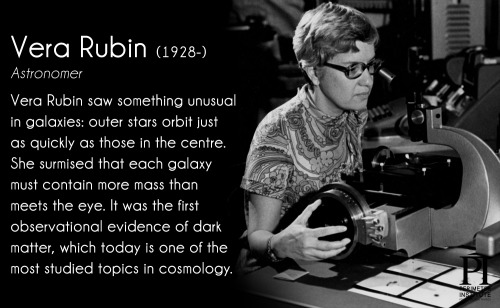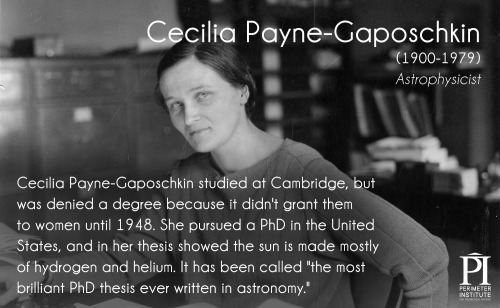A Portal To Another Universe ?


A portal to another universe ?
That my dear friends is a CT scan machine. Stripped off all the body parts, you can see clearly see what goes on inside.
A computerized tomography (CT) or computerized axial tomography (CAT) scan combines data from several X-rays to produce a detailed image of structures inside the body.

CT scan of Brain
Pretty cool, don’t you think ?
Extras
Difference between MRI and CT scan
Why dont you spin the patient instead ? - Awesome reddit thread
Better quality gifs : here
Source Video: Micheal Jonnson
More Posts from T-sci-eng and Others
Puritans, Goths, avant-garde artists, hell-raising poets and fashion icon Coco Chanel all saw something special in it. Now black, that most enigmatic of colours, has become even darker and more mysterious.
A British company has produced a “strange, alien” material so black that it absorbs all but 0.035 per cent of visual light, setting a new world record. To stare at the “super black” coating made of carbon nanotubes – each 10,000 times thinner than a human hair – is an odd experience. It is so dark that the human eye cannot understand what it is seeing. Shapes and contours are lost, leaving nothing but an apparent abyss.
What can we learn from ants and plants?
That’s what IBMer Mauro Martino set out to answer in his award-winning data visualization, Network Earth. It explores nature’s interconnected relationships, and how they affect each other and our planet. By making the complex but important topics easier to visualize, we hope to help make more of them accessible to all.










Coloring Book Celebrates Mathematical Beauty of Nature with Hand-Drawn Golden Ratio Illustrations
Solar System: Things to Know This Week
Reaching out into space yields benefits on Earth. Many of these have practical applications — but there’s something more than that. Call it inspiration, perhaps, what photographer Ansel Adams referred to as nature’s “endless prospect of magic and wonder.“
Our ongoing exploration of the solar system has yielded more than a few magical images. Why not keep some of them close by to inspire your own explorations? This week, we offer 10 planetary photos suitable for wallpapers on your desktop or phone. Find many more in our galleries. These images were the result of audacious expeditions into deep space; as author Edward Abbey said, "May your trails be crooked, winding, lonesome, dangerous, leading to the most amazing view.”

1. Martian Selfie
This self-portrait of NASA’s Curiosity Mars rover shows the robotic geologist in the “Murray Buttes” area on lower Mount Sharp. Key features on the skyline of this panorama are the dark mesa called “M12” to the left of the rover’s mast and pale, upper Mount Sharp to the right of the mast. The top of M12 stands about 23 feet (7 meters) above the base of the sloping piles of rocks just behind Curiosity. The scene combines approximately 60 images taken by the Mars Hand Lens Imager, or MAHLI, camera at the end of the rover’s robotic arm. Most of the component images were taken on September 17, 2016.
800 x 600
1024 x 768
1280 x 1024
1600 x 1200
1280 x 800
1440 x 900
1920 x 1200

2. The Colors of Pluto
NASA’s New Horizons spacecraft captured this high-resolution, enhanced color view of Pluto on July 14, 2015. The image combines blue, red and infrared images taken by the Ralph/Multispectral Visual Imaging Camera (MVIC). Pluto’s surface sports a remarkable range of subtle colors, enhanced in this view to a rainbow of pale blues, yellows, oranges, and deep reds. Many landforms have their own distinct colors, telling a complex geological and climatological story that scientists have only just begun to decode.
800 x 600
1024 x 768
1280 x 1024
1600 x 1200
1280 x 800
1440 x 900
1920 x 1200

3. The Day the Earth Smiled
On July 19, 2013, in an event celebrated the world over, our Cassini spacecraft slipped into Saturn’s shadow and turned to image the planet, seven of its moons, its inner rings — and, in the background, our home planet, Earth. This mosaic is special as it marks the third time our home planet was imaged from the outer solar system; the second time it was imaged by Cassini from Saturn’s orbit, the first time ever that inhabitants of Earth were made aware in advance that their photo would be taken from such a great distance.
800 x 600
1024 x 768
1280 x 1024
1600 x 1200
1280 x 800
1440 x 900
1920 x 1200

4. Looking Back
Before leaving the Pluto system forever, New Horizons turned back to see Pluto backlit by the sun. The small world’s haze layer shows its blue color in this picture. The high-altitude haze is thought to be similar in nature to that seen at Saturn’s moon Titan. The source of both hazes likely involves sunlight-initiated chemical reactions of nitrogen and methane, leading to relatively small, soot-like particles called tholins. This image was generated by combining information from blue, red and near-infrared images to closely replicate the color a human eye would perceive.
800 x 600
1024 x 768
1280 x 1024
1600 x 1200
1280 x 800
1440 x 900
1920 x 1200

5. Catching Its Own Tail
A huge storm churning through the atmosphere in Saturn’s northern hemisphere overtakes itself as it encircles the planet in this true-color view from Cassini. This picture, captured on February 25, 2011, was taken about 12 weeks after the storm began, and the clouds by this time had formed a tail that wrapped around the planet. The storm is a prodigious source of radio noise, which comes from lightning deep within the planet’s atmosphere.
800 x 600
1024 x 768
1280 x 1024
1600 x 1200
1280 x 800
1440 x 900
1920 x 1200

6. The Great Red Spot
Another massive storm, this time on Jupiter, as seen in this dramatic close-up by Voyager 1 in 1979. The Great Red Spot is much larger than the entire Earth.
800 x 600
1024 x 768
1280 x 1024
1600 x 1200
1280 x 800
1440 x 900
1920 x 1200

7. More Stormy Weather
Jupiter is still just as stormy today, as seen in this recent view from NASA’s Juno spacecraft, when it soared directly over Jupiter’s south pole on February 2, 2017, from an altitude of about 62,800 miles (101,000 kilometers) above the cloud tops. From this unique vantage point we see the terminator (where day meets night) cutting across the Jovian south polar region’s restless, marbled atmosphere with the south pole itself approximately in the center of that border. This image was processed by citizen scientist John Landino. This enhanced color version highlights the bright high clouds and numerous meandering oval storms.
800 x 600
1024 x 768
1280 x 1024
1600 x 1200
1280 x 800
1440 x 900
1920 x 1200

8. X-Ray Vision
X-rays stream off the sun in this image showing observations from by our Nuclear Spectroscopic Telescope Array, or NuSTAR, overlaid on a picture taken by our Solar Dynamics Observatory (SDO). The NuSTAR data, seen in green and blue, reveal solar high-energy emission. The high-energy X-rays come from gas heated to above 3 million degrees. The red channel represents ultraviolet light captured by SDO, and shows the presence of lower-temperature material in the solar atmosphere at 1 million degrees.
800 x 600
1024 x 768
1280 x 1024
1600 x 1200
1280 x 800
1440 x 900
1920 x 1200

9. One Space Robot Photographs Another
This image from NASA’s Mars Reconnaissance Orbiter shows Victoria crater, near the equator of Mars. The crater is approximately half a mile (800 meters) in diameter. It has a distinctive scalloped shape to its rim, caused by erosion and downhill movement of crater wall material. Since January 2004, the Mars Exploration Rover Opportunity has been operating in the region where Victoria crater is found. Five days before this image was taken in October 2006, Opportunity arrived at the rim of the crater after a drive of more than over 5 miles (9 kilometers). The rover can be seen in this image, as a dot at roughly the “ten o'clock” position along the rim of the crater. (You can zoom in on the full-resolution version here.)
800 x 600
1024 x 768
1280 x 1024
1600 x 1200
1280 x 800
1440 x 900
1920 x 1200

10. Night Lights
Last, but far from least, is this remarkable new view of our home planet. Last week, we released new global maps of Earth at night, providing the clearest yet composite view of the patterns of human settlement across our planet. This composite image, one of three new full-hemisphere views, provides a view of the Americas at night from the NASA-NOAA Suomi-NPP satellite. The clouds and sun glint — added here for aesthetic effect — are derived from MODIS instrument land surface and cloud cover products.
Full Earth at night map
Americas at night
Discover more lists of 10 things to know about our solar system HERE.
Make sure to follow us on Tumblr for your regular dose of space: http://nasa.tumblr.com


Withstanding a blast of electricity from a huge Tesla coil using a Faraday cage
A Faraday cage shields the interior from external electromagnetic radiation and electrical fields by channelling electricity through the cage, providing constant voltage on all sides of the enclosure. Since the difference in voltage is the measure of electrical potential, no current flows through the interior space of the cage. In our daily lives we are surrounded by this invention. Faraday cages can be found in microwave ovens, elevators and around our computer cables (the shield around cables such as USB’s protects the internal conductor from external electrical noise). Even in your everyday car or plane journey you are surrounded by a Faraday cage protecting you from the adverse effects of electrical fields such as lightning.
Watch the full clip in the 2016 CHRISTMAS LECTURES, ‘Supercharged: Fuelling the future’.


The fifth conic section - Straight line
Although many textbooks regard the straight line to be a specific case of the hyperbola and proclaim only four conic sections, it is something worth noting that the straight line is also a conic section.

Superstretchable, supercompressible supercapacitors
Flexible, wearable electronics require equally flexible, wearable power sources. In the journal Angewandte Chemie, Chinese scientists have introduced an extraordinarily stretchable and compressible polyelectrolyte which, in combination with carbon nanotube composite paper electrodes, forms a supercapacitor that can be stretched to 1000 percent in length and compressed to 50 percent in thickness with even gaining, not losing capacity.
Supercapacitors bridge the gap between batteries, which are merely energy-storing devices, and normal capacitors, which release and take up electric energy very quickly but cannot store so much energy. With their ability to charge and release large amounts of electric power in a very short time, supercapacitors are preferably used in regenerative braking, as power buffers in wind turbines, and, increasingly, in consumer electronics such as laptop computers and digital cameras. To make supercapacitors fit for future electrics demands like, for example, wearables and paper electronics, Chunyi Zhi from the City University of Hong Kong and his colleagues are searching for ways to endow them with mechanical flexibility. It can be achieved with a new electrolyte material: they developed a polyelectrolyte that can be stretched more than 10 times its length and compressed to half its thickness retaining full functionality, without breakage, cracking, or other damage to its material.
Read more.









PERIODIC SPONGE SURFACES AND UNIFORM SPONGE POLYHEDRA IN NATURE AND IN THE REALM OF THE THEORETICALLY IMAGINABLE
By Michael Burt- Prof emeritus, Technion, I.I.T. Haifa Israel
The diversity of shapes and forms which meets the eye is overwhelming. They shape our environment: physical, mental, intellectual. Theirs is a dynamic milieu; time induced transformation, flowing with the change of light, with the relative movement to the eye, with physical and biological transformation and the evolutionary development of the perceiving mind. “Our study of natural form “the essence of morphology”, is part of that wider science of form which deals with the forms assumed by nature under all aspects and conditions, and in a still wider sense, with forms which are theoretically imaginable ..(On Growth and Form D'Arcy Thompson), “Theoretically” to imply that we are dealing with causal- rational forms. “It is the business of logic to invent purely artificial structures of elements and relations. Sometimes one of these structures is close enough to a real situation to be allowed to represent it. And then, because the logic is so tightly drawn, we gain insight into the reality which was previously withheld from us” (C. Alexander). A particular interest should be focused on those structures which are shaped like solids or containers, with continuous two-manifold enveloping surfaces, enclosing a volume of space and thus subdividing the entire space into two complementary sub-spaces, sometimes referred to as interior and exterior, although telling which is which, is a relativistic notion. On each of these envelopes, topologically speaking, an infinite number of different maps composed of polygonal regions (faces), which are bounded by sets of edge segments and vertices, could be drawn, to represent what we call polyhedra, or polyhedral envelopes. We come to know them by various names and notations, evolving through many historical cultures up to our present times; each representing an individual figure-polyhedron, or a family, a group, a class or a domain; convex-finite, Platonic and Archimedean polyhedra; pyramids, prisms; anti-prisms; star polyhedra; deltahedra; zonohedra; saddle polyhedra, dihedral, polydigonal, toroidal, sponge like, finite and infinite polyhedra; regular, uniform, quasi-regular, and so forth; all inscribable in our 3-dimensional space. It is these structures and their extended derivatives which shape our physical-natural or artificial man-conceived environment and provide for our mental pictures of its architecture. The number of forms which had acquired a name or a specific notation through the ages is amounting to infinity, although the number of those which comprise our day to day formal vocabulary and design imagery is extremely (and regretfully) limited by comparison, even amongst designers and architects, whose profession, by definition, compels them to manipulate and articulate forms and space. Here it is right to observe that name-giving is part of the creative and generative process. The number of polyhedral forms which did not receive, as yet a proper name or a notation is also infinite. Infinite is also the number of potentially existing and possible imaginary periodic forms, not envisaged yet. Conspicuous are those relating to sponge-like labyrinthian, polyhedral, space dividing surfaces, which until quite recently were not even considered as a research topic. The interest in these forms has been prompted by our growing awareness of their abundance in nature and their importance, not only in describing micro and macro-physical and biological phenomena, but also in coping with morphological complexity and nature of our built environment and its emerging new architecture and the order and formal character of our living spaces, on either the building or the urban scale. Nature is saturated with sponge structures on every possible scale of physical-biological reality. The term was first adopted in biology: “Sponge: any member of the phylum Porifera, sessile aquatic animals, with single cavity in the body, with numerous pores. The fibrous skeleton of such an animal, remarkable for its power of sucking up water”. (Wordsworth dictionary). the entire study here
© Michael Burt- Prof emeritus, Technion, I.I.T. Haifa Israel

Adieu 2016 - Best of FYP!
2016 has been a great year for FYP!
And we would like to conclude it with some of the best posts that we have been able to produce
1. Black hole are not so black - series

Part - I , II, III
2.‘Katana’ - A sword that can slice a bullet

3. A denied stardom status - Jupiter

4. The Pythagoras Cup

5. On Pirates and Astronomers

6. Behold- The Space Shuttle Tile

7. Principle of Least Effort

8. Leidenfrost Effect

9. Major Types of Engines

10. A holy matrimony of Pascals and Sierpinski’s Triangle

11. Curves of constant width

12. Smooth Ride, Bumpy Road

Thank you so much following us ! Have a great weekend :D
- Fuck Yeah Physics!
-
 federluftmask liked this · 2 years ago
federluftmask liked this · 2 years ago -
 artemis-the-changeling reblogged this · 2 years ago
artemis-the-changeling reblogged this · 2 years ago -
 reckless-desire-to-live liked this · 6 years ago
reckless-desire-to-live liked this · 6 years ago -
 beautiful-flutey reblogged this · 6 years ago
beautiful-flutey reblogged this · 6 years ago -
 beautiful-flutey liked this · 6 years ago
beautiful-flutey liked this · 6 years ago -
 rai-knightshade reblogged this · 6 years ago
rai-knightshade reblogged this · 6 years ago -
 rai-knightshade liked this · 6 years ago
rai-knightshade liked this · 6 years ago -
 angelic-girl liked this · 6 years ago
angelic-girl liked this · 6 years ago -
 themissdreamingstories liked this · 6 years ago
themissdreamingstories liked this · 6 years ago -
 dragonkinglover reblogged this · 6 years ago
dragonkinglover reblogged this · 6 years ago -
 dragonkinglover liked this · 6 years ago
dragonkinglover liked this · 6 years ago -
 loucamp28 liked this · 6 years ago
loucamp28 liked this · 6 years ago -
 littleredhotsridinghood liked this · 7 years ago
littleredhotsridinghood liked this · 7 years ago -
 wear-eall-stardust liked this · 7 years ago
wear-eall-stardust liked this · 7 years ago -
 iddareiames liked this · 7 years ago
iddareiames liked this · 7 years ago -
 rannasgibbi-blog liked this · 7 years ago
rannasgibbi-blog liked this · 7 years ago -
 artbeet liked this · 7 years ago
artbeet liked this · 7 years ago -
 wisestarfishbird-blog liked this · 7 years ago
wisestarfishbird-blog liked this · 7 years ago -
 star-thrower liked this · 7 years ago
star-thrower liked this · 7 years ago -
 t-sci-eng reblogged this · 7 years ago
t-sci-eng reblogged this · 7 years ago -
 chupadave reblogged this · 7 years ago
chupadave reblogged this · 7 years ago -
 chupadave liked this · 7 years ago
chupadave liked this · 7 years ago -
 ghryorrirr-blog liked this · 8 years ago
ghryorrirr-blog liked this · 8 years ago -
 xavier6y2002 liked this · 8 years ago
xavier6y2002 liked this · 8 years ago -
 radpaperwolf-blog liked this · 8 years ago
radpaperwolf-blog liked this · 8 years ago -
 rat---king liked this · 8 years ago
rat---king liked this · 8 years ago -
 q-lvck liked this · 8 years ago
q-lvck liked this · 8 years ago -
 titwagon liked this · 8 years ago
titwagon liked this · 8 years ago -
 oblectamenta reblogged this · 8 years ago
oblectamenta reblogged this · 8 years ago -
 q-lvck reblogged this · 8 years ago
q-lvck reblogged this · 8 years ago -
 mousse100-blog liked this · 8 years ago
mousse100-blog liked this · 8 years ago -
 lahcrairtam liked this · 8 years ago
lahcrairtam liked this · 8 years ago -
 yitgadal reblogged this · 8 years ago
yitgadal reblogged this · 8 years ago -
 imnotyourwife-blog1 liked this · 8 years ago
imnotyourwife-blog1 liked this · 8 years ago -
 jennifornow reblogged this · 8 years ago
jennifornow reblogged this · 8 years ago -
 jylljylljyll liked this · 8 years ago
jylljylljyll liked this · 8 years ago -
 mcwolfy liked this · 8 years ago
mcwolfy liked this · 8 years ago -
 sosemgondoltamvolna reblogged this · 8 years ago
sosemgondoltamvolna reblogged this · 8 years ago -
 absolut111 liked this · 8 years ago
absolut111 liked this · 8 years ago -
 joe-a-nevem liked this · 8 years ago
joe-a-nevem liked this · 8 years ago -
 kezenani liked this · 8 years ago
kezenani liked this · 8 years ago










